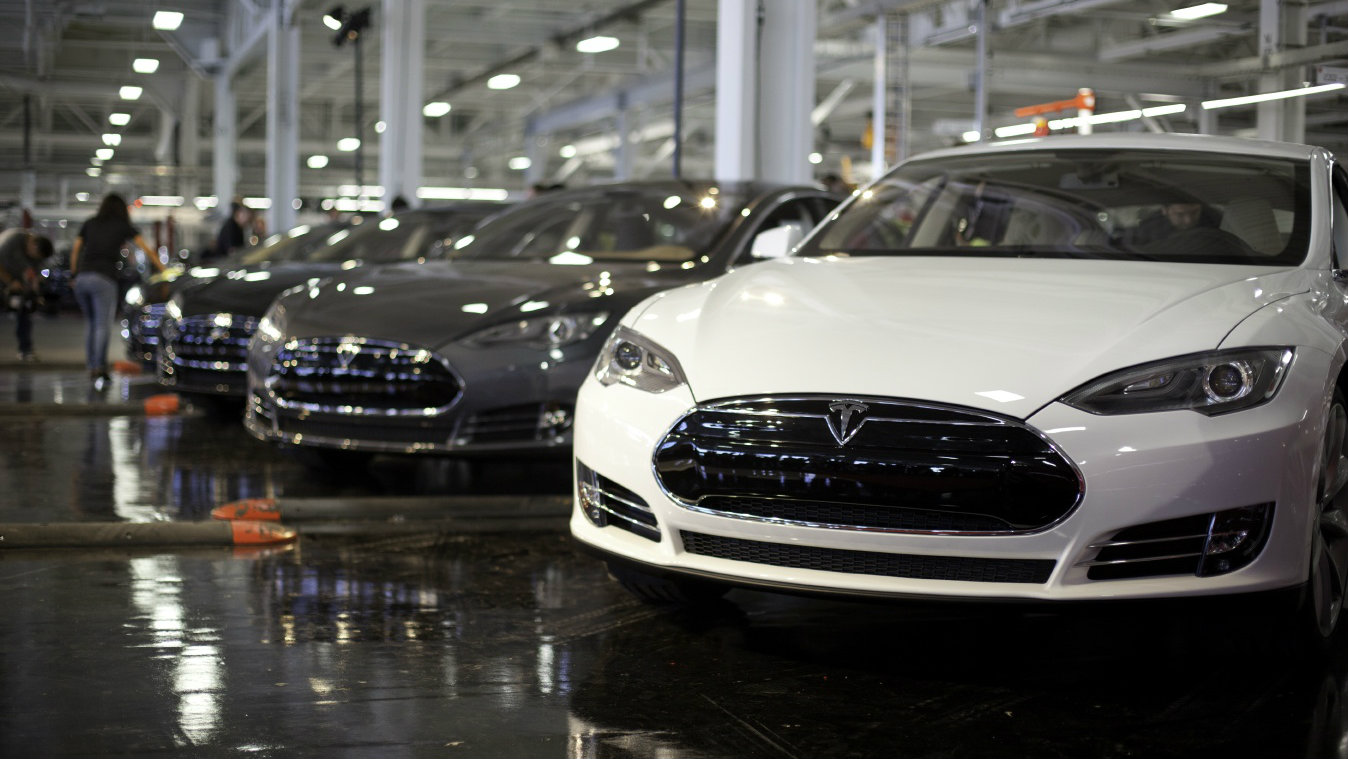Reno, Reno, Nev., won Teslaâ€
The company’s decision comes after a five-state competition, which included Texas, Arizona, New Mexico, and Tesla’s home state, California. The factory, a joint venture with the Panasonic Corporation, will not produce Tesla cars, but rather the lithium-ion battery packs that power electric vehicles.
The eye-popping package is more than double the $500 million Tesla CEO Elon Musk had initially named as his target for incentives, and one of the largest ever provided to a single company. The details, according to USA Today, include:
- $725 million in sales tax abatements over 20 years, which is equal to about 80 percent of the total sales tax revenue state government receives in a year.
- $332 million in real and personal property tax abatements over 10 years — an amount equaling two and a half times the amount of property tax revenue Washoe County receives in a year.
- $195 million in transferable tax credits, which other Nevada companies will be able to buy from Tesla in order to reduce their own tax liabilities to the state.
- $27 million in payroll tax abatements over 10 years.
- $8 million in electricity rate discounts over eight years.
I am a fan of Tesla cars (I’d like to have one of my own) and Musk is surely one of the most intriguing innovators and minds of his generation. But no matter how you slice it, the deal makes utterly no sense. It is just one more example of a government giveaway for a factory that would have been built anyway. As I’ve argued before, there is virtually no association between economic development incentives and any measure of economic performance. And it’s not just me. I spoke with several experts in economic development incentives and advanced manufacturing and the consensus was the same: This deal was overblown and unnecessary.
The numbers speak for themselves
Tesla says the plant will directly employ 6,500 workers. But political scientist Kenneth Thomas, one of the nation’s leading experts on incentives, points out that “we shouldn’t count jobs that a company won’t be held responsible for, and Tesla is only getting job creation tax credits for up to 6,500 jobs.” Martin Kenney, my sometimes-collaborator who is a professor at the University of California, Davis and an expert on high tech factories and industries, thinks 3,000 jobs is more likely.
The state of Nevada says the factory will ultimately create 22,000 jobs, after the multiplier effect of the Gigafactory is taken into account. That’s a multiplier of more than three times the number of direct jobs. A smaller multiplier — say around 1.5 — is generally thought to be more in line with something like a high-tech battery plant, so the Gigafactory might more likely lead to the creation of something closer to 9,750 jobs.
But look at how much Nevada is paying per job. If we use the state’s own estimate of 22,000 total jobs, then Nevada is paying more than $56,800 per worker. Using the more reasonable figure of 9,750 jobs, the picture is even bleaker: Nevada is paying nearly than $132,000 per job. Looking just at the direct 6,500 jobs the plant says it will create, the number jumps to more than $192,000 per job. And it the plant ends up creating only half that amount, as some predict, the figure balloons to a staggering $385,000 per job. The spillovers are limited, Kenney notes, by the simple fact that a battery plant, however advanced its technology, is much more self-contained than an automotive assembly plant, which forms the hub of an extensive supply chain. “There is little high-tech benefit in terms of things like research,” Kenney writes in an email. And since there is no real supply chain for the plant in the region, it is likely that a lot of money will leak out of Reno. Thomas notes that if the plant is ultimately successful, and electric cars take over our roadways, there will be job losses at traditional auto companies, where conventional gasoline-powered engines are built. “Therefore,” he writes in an email, “the net benefit to the country will be less than 6,500 jobs.” Those lost engine plant jobs would almost certainly be higher paying ones than the $22 an hour jobs the Gigafactory will create.
A Palo Alto in the desert?
There’s also not much to the argument that the Gigafactory will transform Reno into a tech hub. Reno is a long way from becoming Silicon Valley. It ranks 70th on my own creativity index, an overall ranking of regional competitiveness based on technology, talent and tolerance. This is about the same as Milwaukee, Cedar Rapids, or Syracuse. Out of 361 metros, I ranked Reno 71st in tech and 210th in talent. And it ranks 198th on the Milken Institute’s Best Performing Cities list, which measures job, wages and tech performance.
Tesla’s main headquarters remains in Palo Alto, with its assembly plant in nearby Fremont. That means the Bay Area, rather than Reno, will remain the company’s real innovation hub. Furthermore, there is little holding the Gigafactory in Reno. It’s important to note that this project is not just about producing batteries for Tesla. It is Musk and Panasonic making a bet on the future of the electric battery and the storage industry for electric vehicles more broadly. But if the technology becomes as popular, ubiquitous and specialized as Tesla leadership is hoping, what would prevent the factory or future factories from relocating over the border in Mexico, where labor costs are far cheaper?
The bidding process that wasn’t
The great irony is that the bidding process might not have been a bidding process at all, but an attempt to wrangle more incentives for Tesla’s desired location. Though Tesla broke ground at the Reno site of its factory earlier this summer, it resisted conceding that the Silver State had won the competition until just last Thursday. In fact, Musk said Thursday that “it wasn’t just about the incentives,” noting that Nevada hadn’t even offered the most generous incentives package. That indicates that the factory would likely have ended up in Reno regardless.
This is nothing new. Companies game the process all the time. As I wrote in 2012, “companies typically select locations based on factors such as workforce, proximity to markets, and access to qualified suppliers, and then pit jurisdictions against one another to extract tax benefits and other incentives.”
Thomas points out the “informational asymmetry” that companies use to game the process.
Today, companies have learned that the site location decision is a great opportunity to extract rents from immobile governments, and invest considerable resources into doing just that. An entire industry has sprung up to take advantage of businesses’ informational advantages over governments — and, indeed, intensify that asymmetry — to make rent extraction as effective (not “efficient”) as possible.
Research by the Pew Charitable Trust’s project on economic development tax incentives adds that states often don’t have enough information or have not performed enough analysis to determine whether a given venture is a good fit. “[W]hen incentives are enacted as permanent parts of state tax codes, lawmakers often have little impetus to review them,” the Pew researchers write. “Unlike direct state spending, which must be renewed with each budget, tax incentives frequently continue indefinitely without policymakers revisiting their cost or effectiveness.”
Nevada officials say that the incentives are performance-based, requiring a $3.5 billion investment from a company or the state is permitted to “claw back” its giveaways. But such procedures are rarely invoked. Additionally, Tesla says it will invest $7.5 million a year for five years in Nevada’s public education system to help offset the impact of the workers (and their families) on local school districts. The company also says it will provide $1 million to the University of Nevada, Las Vegas for battery research. But such contributions are unevenly tracked across states — particularly in Nevada, which watchdog group Good Jobs First says the state ranks 45th in the nation in subsidy disclosure. Fortunately, there is serious skepticism in the Nevada state legislature about this deal. Lawmakers have noted the sheer size of the plan: The amount of tax breaks that Tesla will receive from Nevada over 20 years (which comes to $720 million) will amount to about 80 percent of what the entire state of Nevada receives in a year.
At the end of the day, the bottom line question is: Would this investment have happened without incentives? The answer, given everything we know, is a resounding a “yes.” Musk and partners already had the site picked out and had begun building their facility earlier this summer.
It’s just one more reason to put an end to incentives once and for all.
 This story was produced by The Atlantic’s CityLab as part of the Climate Desk collaboration.
This story was produced by The Atlantic’s CityLab as part of the Climate Desk collaboration.



